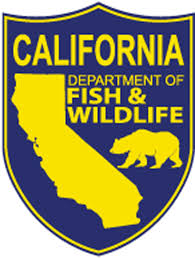
Deutschman Lab Projects
The Hermes Copper is a rare butterfly endemic to San Diego County and northern Baja California.
Adult emergence is fairly consistent, generally beginning in mid to late May, with the flight period extending to late June or mid-July. Individuals are in the egg stage during the overwintering period and spend a short time as caterpillars. Larvae use only Spiny Redberry, Rhamnus crocea, as a host plant while adults nectar almost exclusively on California Buckwheat, Eriogonum fasciculatum. These adults are rarely found far from Spiny Redberry plants.
This species is threatened by recent urbanization and wildfires throughout its range in the United States. In April of 2011 the U.S. Fish and Wildlife Service (USFWS) issued a 12-month finding which stated listing the Hermes Copper as threatened or endangered was warranted, and is currently on the USFWS list of candidate species. Our research on this species started in 2003 and has been used for this status review as well as other monitoring and management activities.
Investigating Critical Biological Uncertainties
Initial efforts included systematic surveys for Hermes Copper adults in 2003 with transect counts but were altered to include marking studies in 2004-2007. We were able to detect differing adult densities among sites and limited movement patterns at two selected sites due to the predominance of territorial males observed. Adult surveys in 2008 and 2009 were designed to assess presence/absence at most historical sites following wildfires in 2003 and 2007, documenting the extirpation of several local populations. Subsequent surveys have documented only two recolonizations and that that the relative density of Hermes Copper adults is fairly consistent across occupied sites, but that the exact number of individuals can vary widely on an annual basis. In addition, most observations occurred in a small section of San Diego County from Jamul to Descanso.
A non-lethal genetic sampling protocol was developed and evaluated prior to implementation for a population genetics study. This work suggests that Hermes Copper was likely able to disperse across the county relatively freely in the past. The detection of only two events indicates that Hermes copper currently has restricted dispersal and habitat fragmentation may be the reason for the slow post-wildfire recolonizations observed.
Recently, increased efforts have been allocated to better describe the life history of immature stages as well as develop laboratory rearing protocols.
Translocation Project
As described above, the large wildfires in 2003 and 2007 led to the extirpation of many Hermes copper populations but 10 and 5 years after the fires, respectively, few recolonizations have occurred. We feel now is the time to work towards establishing effective translocation protocols for Hermes copper before the number of individuals and populations are reduced to critically low numbers. As it stands today, Hermes copper is one large fire away from being so rare that translocation efforts would be very difficult or impossible. This translocation project, if successful, will establish a population outside of the current distribution, reducing the chances of one catastrophic event leading to extinction.
Research Tasks
1. Describe the distribution of Hermes Copper on conserved lands in San Diego County
2. Estimate population sizes
3. Investigate movement patterns, both within habitat patches and across the landscape
4. Describe the biology of immature stages
5. Collect adult abundance data at reference sites to develop a long-term data set
6. Develop laboratory rearing protocols
7. Re-establish a Hermes copper population in suitable habitat which was occupied prior to recent wildfires
Lead Biologist: Daniel Marschalek
This project is funded by a grant from San Diego Association of Governments (SANDAG).
Funding for past work related to the project was from California Department of Fish & Wildlife and San Diego State University.
Hermes Copper (Lycaena hermes): Research and Monitoring to Address Biological Uncertainties and Potential Management Actions




